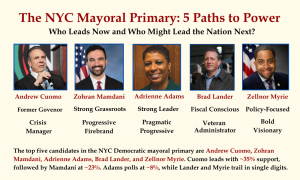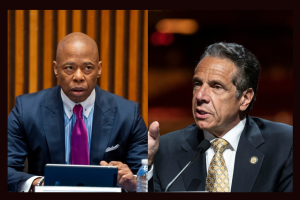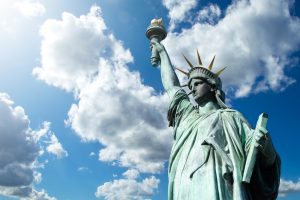A deep analysis of how racial and economic realities shape the concerns of white and non-white voters — and whether equitable solutions are within reach.
By Brian Figeroux, Esq.
Divided Priorities, Shared Struggles: NYC Voters’ Top Issues in 2025: Executive Summary
In 2025, New York City voters are confronting a host of urgent challenges — from skyrocketing housing costs to concerns about public safety and economic security. While white and non-white voters share some common ground, their priorities often reflect deeply different lived experiences and historical inequalities.
White voters are primarily focused on economic stability and public safety through increased policing, property values, and school quality. Non-white voters, meanwhile, are emphasizing economic opportunity, affordable housing, healthcare access, police accountability, and dismantling systemic racism.
Despite these differences, shared anxieties over the cost of living and neighborhood safety offer potential pathways for building cross-racial coalitions. However, truly equitable solutions will require acknowledging historical injustices, targeting resources to marginalized communities, and fostering solidarity across racial and class divides.
The 2025 elections represent a pivotal opportunity for leadership that unites — rather than divides — a diverse city facing enormous pressures. Whether New York City can craft a future rooted in fairness and shared prosperity remains the critical question of this political moment.
In 2025, New York City stands at a pivotal crossroads. The city has weathered economic downturns, public health crises, and rising tensions around inequality and policing. As voters head to the polls this year to elect their next mayor and City Council members, the issues they care most about reveal a city that is both deeply divided — and surprisingly aligned.
White and non-white voters share some anxieties: an affordability crisis, concerns about public safety, and a desire for better schools. But beneath the surface, there are profound differences in how these problems are experienced and prioritized, shaped by a long history of racial, economic, and political inequality.
Understanding these differences — and the potential for shared solutions — is critical not only for the 2025 elections but for the future of America’s largest and most diverse city.
Overview of NYC Demographics and Political Landscape
New York City’s demographic makeup has continued to evolve into 2025:
- About 30% of residents are white (non-Hispanic)
- 29% Latino or Hispanic
- 24% Black
- 14% Asian
- Smaller percentages represent Indigenous, Middle Eastern, and multiracial communities
Importantly, the city’s voting population is increasingly younger and more diverse. New citizens, second-generation immigrants, and young voters of color are reshaping the electorate, even as traditional political power structures — heavily white and older — continue to wield significant influence, especially in wealthier neighborhoods.
Historically, white voters in NYC have leaned more moderate or conservative, particularly on issues like policing, taxes, and development. Non-white voters, especially Black and Latino communities, have leaned more progressive, prioritizing economic justice, education equity, and criminal justice reform.
Yet in 2025, all voters — regardless of race — are grappling with a city that feels less affordable, less safe, and less certain about its future.
Main Concerns for White Voters
Among white voters in New York City, several issues have risen to the top in 2025:
- Economic Uncertainty
While NYC’s economy has rebounded in many sectors, inflation and rising taxes weigh heavily on white homeowners and business owners. Many are concerned about property taxes, business regulations, and the broader cost of living — from grocery bills to transportation fares.
- Public Safety and Policing
White voters, particularly in outer boroughs like Staten Island and parts of Queens, prioritize public safety as a top issue. Rising perceptions of crime (even if actual crime rates fluctuate) fuel demands for more police presence, stronger penalties for violent offenses, and resistance to policing reforms.
- Quality of Public Education
In wealthier neighborhoods, white parents are increasingly vocal about school quality, standardized testing, and gifted and talented programs. Controversies around school admissions reforms, particularly in elite public schools like Stuyvesant High School, have heightened tensions.
- Property Values and Zoning
Concerns over new housing developments — particularly affordable housing — often revolve around fears of declining property values. Opposition to upzoning in traditionally single-family neighborhoods reflects anxiety about change and overcrowding.
In short, for many white voters, stability — economic, social, and cultural — is the underlying concern.
Main Concerns for Non-White Voters
Meanwhile, non-white voters — who make up the majority of NYC’s population — bring a different, though overlapping, set of concerns to the table:
- Economic Opportunity and Wage Growth
While cost of living affects everyone, non-white workers are more likely to be stuck in low-wage, unstable jobs without benefits. The call for higher minimum wages, expanded union protections, and better job training programs resonates deeply.
- Affordable Housing Crisis
Skyrocketing rents have displaced countless Black, Latino, and Asian families from historic neighborhoods. Eviction rates remain highest in majority non-white communities like the South Bronx, East New York, and parts of Harlem. Solutions like rent control expansion and public housing investment are high priorities.
- Police Accountability and Systemic Racism
While safety is important to all voters, non-white communities often view policing through a different lens — emphasizing racial profiling, excessive force, and the need for community-led safety alternatives. Calls for civilian oversight and divestment from traditional policing models are strong.
- Access to Healthcare and Education
Non-white voters are more likely to struggle with healthcare affordability and quality, and they demand expanded services, especially for immigrants and low-income families. Similarly, educational equity — including fair funding for public schools and support for English Language Learners — remains a central concern.
Similarities Between White and Non-White Voter Concerns
Despite the sharp contrasts in some areas, there are powerful common threads running through the concerns of both white and non-white voters in 2025.
- Cost of Living and Housing Affordability
No matter the neighborhood, almost everyone in New York City feels the pinch of skyrocketing rents, home prices, and basic living expenses.
- Both white and non-white voters express deep frustration at how hard it is to afford a home in the city they love.
- The fear of being priced out — whether from Park Slope or the South Bronx — creates a shared anxiety across racial lines.
- Economic Anxiety
Inflation, stagnating wages, and the sense that the economy is “rigged” against ordinary people are common themes in voter conversations.
- White voters may express it through frustration about taxes and small business struggles.
- Non-white voters often talk about lack of job opportunities and wage exploitation. But both groups share a sense of economic vulnerability that is shaping their political choices.
- Desire for Safer Neighborhoods
Safety remains a universal concern.
- While white voters might emphasize policing and crime deterrence, non-white voters want safe communities too — but often coupled with demands for respectful, non-discriminatory policing.
- Everyone wants to be able to walk home safely at night, send their kids to good schools, and trust their local institutions.
These shared concerns offer a foundation for coalition-building — if leaders are willing to bridge the language and trust gaps between communities.
Key Differences
However, there are also deep and important differences between white and non-white voter priorities, rooted in different lived experiences with systemic issues.
- Public Safety Framing
- White voters often focus on increasing police budgets and visibility.
- Non-white voters emphasize police reform, accountability, and alternatives to traditional law enforcement. For example, after several high-profile police violence incidents in 2023-24, many Black and Latino communities are skeptical of “law and order” platforms that don’t address racial justice.
- Government Trust
- White voters in wealthier areas tend to demand efficiency from government but are less concerned about its fairness.
- Non-white voters are more likely to experience systemic discrimination firsthand — from policing to public school admissions to healthcare access — leading to deeper skepticism about whether government institutions serve them equitably.
- Stakes in Housing and Zoning
- For many white homeowners, zoning fights are about protecting property values and neighborhood character.
- For non-white renters, it’s a matter of survival — securing affordable housing before they’re displaced entirely. Thus, debates over “neighborhood change” carry vastly different emotional and material stakes depending on a voter’s race and economic position.
These differences create fault lines that politicians must navigate carefully if they hope to unify the city under any new administration.
Can These Issues Be Solved Equitably?
The question at the heart of the 2025 election — and New York City’s future — is whether these complex, often racialized issues can be addressed in a way that is truly equitable.
The answer: Yes — but it won’t be easy.
- Shared Investment in Housing, Healthcare, and Jobs
Policies that prioritize building deeply affordable housing, expanding universal healthcare access, and boosting good-paying union jobs benefit all working- and middle-class New Yorkers, regardless of race.
- Zoning reforms that require affordable housing units in all neighborhoods can lower resistance among white voters concerned about displacement while ensuring non-white communities are not left behind.
- Investments in public hospitals and clinics improve healthcare for everyone — but particularly for uninsured and underinsured communities.
- Strengthening labor rights and raising wages help close racial wealth gaps without alienating white working-class voters who feel economically insecure.
- Acknowledging and Addressing Historic Inequities
However, equitable solutions require acknowledging that past policies — from redlining to school segregation — created today’s disparities.
- Simply offering “race-neutral” policies won’t undo generations of systemic injustice.
- Programs targeted specifically at communities that have been historically marginalized — such as minority business grants, first-generation homeownership programs, and reparative education funding — are necessary components of true equity.
- Building Cross-Racial Solidarity
Real progress depends on building trust across racial and economic lines. That means:
- Honest conversations about race, privilege, and structural inequality
- Political leadership that refuses to pit communities against each other
- Policy design that lifts the floor for everyone while recognizing that some communities need more to catch up
The danger, of course, is that inaction or “colorblind” policymaking will only deepen existing divides. The opportunity, if seized, is a New York City that leads the nation in demonstrating what true multi-racial democracy and shared prosperity can look like.
Conclusion
New York City’s 2025 election comes at a moment of profound challenge — and profound possibility. White and non-white voters alike are grappling with economic pressure, fears about safety, and frustrations with a system that often seems unresponsive to their needs. Yet the specific experiences and historical burdens they carry shape these concerns in different ways.
If leaders are bold enough to tackle these differences head-on — rather than ignoring or inflaming them — and to craft policies rooted in justice and solidarity, then New York can emerge from this moment stronger, fairer, and more united than ever before.
The question now is whether the political courage exists to make that vision a reality.
Click Here to Schedule a Consultation with Figeroux & Associates Today!




